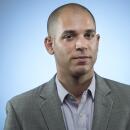John Bryson, former Commerce secretary, won’t be charged in hit-runs
- Share via
In the weeks after former Commerce Secretary John Bryson’s bizarre series of hit-and-run collisions in the San Gabriel Valley, authorities said his blood tests would be pivotal in deciding whether to file criminal charges.
On Tuesday, Los Angeles County prosecutors revealed that Bryson tested positive for a small amount of Ambien, a popular sleep aid, after he was found alone and unconscious behind the wheel of his Lexus last month. But authorities concluded the accidents were caused by a seizure Bryson suffered and said he should not face criminal charges in connection with them.
According to a district attorney’s memo, both treating doctors found that Bryson was suffering from confusion after a seizure and crashed his car as a result.
Authorities could not determine if the Ambien in his system played any role in the crashes. Bryson’s blood work showed an amount on the “low end of therapeutic levels.”
Prosecutors concluded there was “insufficient evidence to prove driving under the influence.”
The maker of Ambien warns users not to take the drug and drive — but experts say it can stay in the blood for some time without much effect. Unlike with alcohol, California has not set a legal limit for the amount of Ambien in a person’s system while driving. Instead, authorities use a more subjective approach, said attorney and former prosecutor Neil Shouse.
Rather than a clear-cut guideline — such as the 0.08% blood alcohol limit — authorities take into account a number of factors, including the driver’s sensitivity to the sleeping aid, how much of the medication is in the system and how apparent the side effects are at the time of an incident, Shouse said.
“It’s often a situation that it has a presence in the blood but not enough to have an intoxicating effect,” Shouse said.
Alon Avidan, director of the UCLA Sleep Disorders Center, said the drug’s half-life is two hours, meaning half the dose is metabolized and therefore no longer appears in blood tests fairly quickly. But he said he had no specific data on when the drug leaves the system entirely.
The D.A.’s decision closes a case that drew national attention. Bryson had been driving his Lexus one evening last month when he rear-ended a Buick that was waiting for a train to pass. After briefly stopping to talk to the three men inside the Buick, he started driving again and struck the Buick a second time.
The men in the Buick called 911 and then followed Bryson’s car as he continued to drive into Rosemead, where he allegedly crashed into a second vehicle, carrying two people.
Bryson had come to Southern California to give the commencement speech at Polytechnic School in Pasadena, the alma mater of his four daughters. Some students and parents at the school noticed that Bryson, a polished public speaker, made mistakes and had lapses during his remarks. Several people told The Times that he repeated himself and rambled at times.
Bryson resigned from his post last month after the Commerce Department said the crashes were caused by seizures. Tests administered at the scene showed he was not drinking at the time.
San Gabriel Police Sgt. Brian Kott said the district attorney’s office did a thorough job of evaluating the case for possible prosecution. He declined to comment on whether officers’ observations of Bryson at the accident scene were consistent with Ambien use.
“That would be a purely speculative opinion,” he said.
More to Read
Sign up for Essential California
The most important California stories and recommendations in your inbox every morning.
You may occasionally receive promotional content from the Los Angeles Times.













